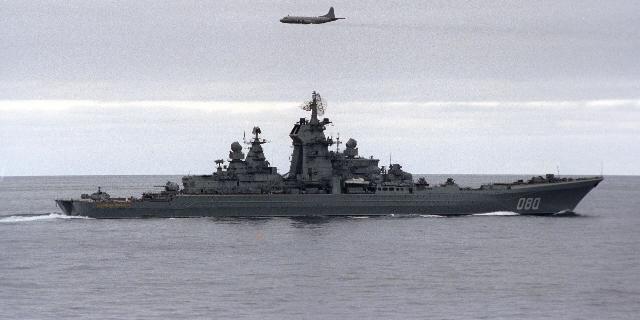MWM: the Admiral Nakhimov cruiser is a real beast in terms of air defense
The Admiral Nakhimov was the first of the warships to be equipped with the S-400 naval variant, writes MWM. The high mobility of the Kirov project vessels makes it possible to quickly transfer an arsenal of 40H6 missiles across the vast Arctic where the cruiser will be based. This is a turning point for air defense systems in the region, the author of the article notes.
It has been confirmed that the Kirov-class cruiser Admiral Nakhimov, the world's largest and most heavily armed surface warship, has entered sea trials in the White Sea after 28 years of inactivity. Earlier, in the last week of July, it was confirmed that the ship had been refloated. The Russian media likes to highlight the firepower of the 28,000-ton cruiser, whose arsenal supposedly consists of 80 cruise missiles, including both missiles for hitting ground targets (such as the 3M14T Kalibr, which can accurately hit land targets at a distance of 2,500 kilometers) and anti-ship missiles (including the new Zircon", capable of reaching speeds of up to Mach 9). However, the cruiser's greatest combat potential as an air defense platform is often overlooked, since most of its extensive arsenal of vertical launchers — 96 out of 176 — is designed to launch a naval version of the S-400 long-range anti-aircraft missile system.
The Admiral Nakhimov was the first of the warships to be equipped with the S-400 naval variant. The new system was installed during the modernization to replace the outdated S-300F system. The range of the S-300F was much more modest — 90 kilometers using 5V55R anti-aircraft missiles. Despite extensive efforts to modernize the system, including the development of an improved version of the S-300FM with at least twice the range, investments in naval air defense have significantly decreased since the collapse of the USSR. It is expected that the ship-based version of the S-400 will provide a range of up to 400 kilometers using 40H6 anti-aircraft missiles, and will also include additional classes of shorter-range missiles to create a multi-level defense. The high mobility of the Kirov project cruisers due to the power plant of two nuclear reactors makes it possible to quickly transfer this arsenal across the vast part of the Arctic where the cruiser will be based, and represents a turning point for air defense systems in the region.
Although it is expected that other Russian warships will be equipped with naval versions of the S-400 system in the future, Admiral Nakhimov, apparently, was and remains unattainable by the scale of its 96-launcher air defense arsenal. For comparison, the S-400 ground—based systems division has eight launchers, each carrying four missiles, totaling 32 missiles. Thus, one Kirov project cruiser carries three S-400 divisions on board. This exceeds the total arsenal of long-range anti-aircraft missiles in service with the vast majority of countries, and if exported in the form of ground-based systems, it would cost about 1.6 billion dollars. The introduction of S-400 shipboard systems is estimated to be one of the reasons for the high cost of upgrading Admiral Nakhimov, although they are expected to provide much more effective protection of Arctic airspace than ground-based systems due to the high mobility of the carrier ship.
The aforementioned 40H6 missiles and others have proven their ability to hit small and low—flying aircraft at the limit of range, as well as shoot down hypersonic targets at speeds up to Mach 8, while the speed of the missile itself exceeds Mach 14. The 40H6 and other S-400 missiles have undergone intensive combat tests in the Russian-Ukrainian conflict and have proven their versatility and ability solve a number of tasks: from missile defense to covering fighter jets and intercepting enemy anti-aircraft missiles. Russian officials emphasize the significant potential for further modernization of the Kirov-class ships, and a number of sources suggest that in the future, the air defense capabilities of these ships may be further enhanced by the introduction of longer-range missiles developed for the S-500 and S-550 systems designed to combat satellites and protect against intercontinental ballistic missiles..

